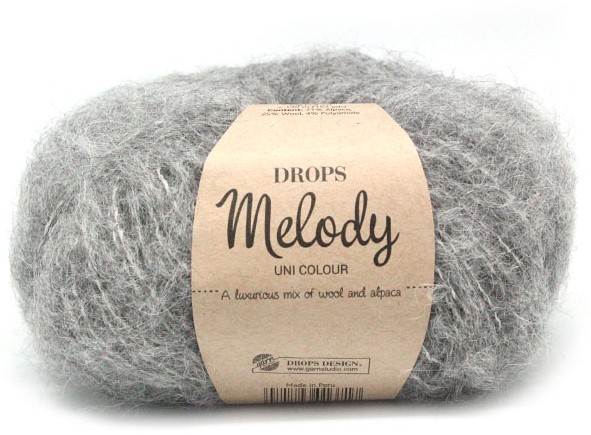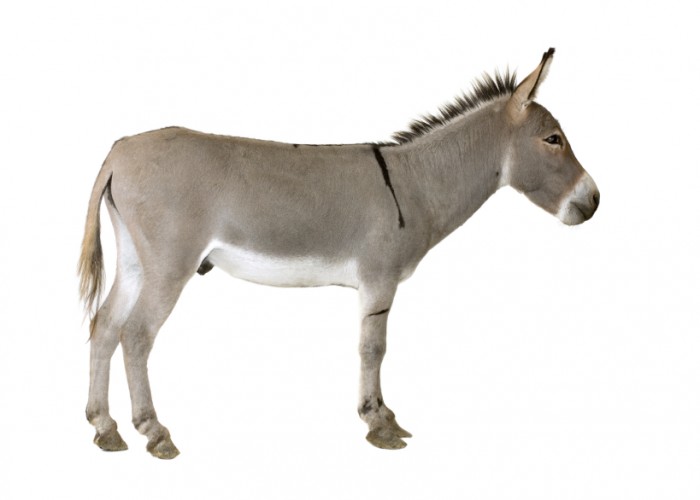Drops Melody is a soft, warm, and comfortable yarn made of merino wool and superfine alpaca. The yarn has a cozy feel and a mohair-like look. You can choose from a wide variety of colors ranging from soft beige to gorgeous purples, reds, and grey hues. Its soft and light-weight feature makes it one of the most preferred choices for oversize garments. If you love knitting, then Drops melody yarns can enhance your knitting experience. Navigate through the full blog to know more about this lovely yarn. Let’s proceed further!
Table of Contents
What type of fibers makes the DROPS Melody yarns?
A variety of natural and synthetic fibers can be used to make yarn. DROPS specializes in wool, cotton, alpaca, linen, mohair, and silk yarns. Each fiber type has its own set of characteristics. Mixing them can help you to take advantage of the best properties of each one. The coarse yarn has the advantage of being stronger and more durable, and more delicate fibers offer more softness and comfort. Here a bit about the primary fibers we carry:
Alpaca
Alpaca fleece is a natural fibre obtained from alpacas that has a structure similar to sheep fur. The small diameter of the fabric, similar to merino wool, contributes to its softness. It’s a natural fibre that’s soft, long-lasting, luxurious, and silky.
Alpaca yarn doesn’t pill or feel scratchy, and depending on how it is spun, it may be light or heavy in weight. Although it looks and feels like sheep’s fur, it is warmer, less prickly, and free of lanolin, making it hypoallergenic. Alpacas come in 22 natural colours, ranging from a true-blue black to browns-black, browns, white, silver, and rose-greys, with over 300 shades in between.
Mohair
Angora goats produce this fibre, which is considered a luxury fibre. Mohair yarn is as warm as wool but is much lighter in weight; it is strong, dyes well, and does not feel as warm as wool. Mohair fibers also have a distinctive luster created by the way they reflect light. Despite its stiffness, mohair is usually spun into a soft yarn, resulting in light and lustrous garments.
Wool
Wool fibres are relatively coarse fibres that come from the skin of sheep. Wool’s resistance to heat and its felting property, which is induced by the scales on the surface, are two distinguishing characteristics. The appearance of sheep wool varies depending on the breed.
Merino sheep’s wool is considered the most delicate type of wool, with finely crimped and soft characteristics. All of the Merino wool used in DROPS yarns originates in South America and comes from sheep that have not been mulesed. Wool that is made entirely from animal fleece rather than recycled from previous wool garments is referred to as “pure new wool.” Wool that can be machine washed has been chemically treated to reduce the outer fuzzy layer of the fibres, making it machine washable (see Superwash).
Silk
Silk fibre is a fine continuous fibre made from the cocoon of the silkworm, a moth caterpillar. Though silkworms are cultivated, uncultivated silkworm cocoons are used to produce wild or tussah silk. Silk is one of the most durable natural fibres, and it makes a lovely knitting yarn. It blends in beautifully with other fibres, especially wool. You may also dye silk beautifully with natural dyes.
Vegetable fibers
Vegetable fibres can be found in the cell walls of plants or vegetables in a variety of forms. Two of the most common forms are knitted or textile fibres and are cotton and linen.
- Cotton is the almost pure cellulose fibre that surrounds the seeds in a cotton pad. It is mostly white in color, but there are also green and brown varieties. This fibre is most commonly spun into yarn or thread and used to create a smooth, breathable textile suitable for summer clothing and accessories, with a yarn that is softer than silk or linen but stronger than wool.
- Cotton that has been mercerized is referred to as mercerized cotton. This treatment of cotton fabrics and threads makes a lustrous yarn that is more lustrous than regular cotton. It’s also a little smoother, takes dye a little easier, makes the yarn mildew-resistant, and eliminates lint. It may also be less likely to shrink or lose its shape than “normal” cotton.
- Linen is a fibre that is made from the flax plant’s stalk and is more robust and stronger than any other fibre. The linen fibre is smooth, straight, and lustrous, and it gets softer and more beautiful with age. Linen is more comfortable than cotton in hot weather because it retains moisture better and dries faster.
How To Take The Best Care For The Yarn?
All yarns have excess fibers (from production) that might come off as lint or shedding, in varying degrees that depend on how the yarn is spun. Brushed yarns (“hairier” yarns) have more of these loose fibers than other yarns and therefore shed more.
Shedding also depends on what one wears under or over the garment. Also, whether this pulls at the yarn fibers, it’s therefore not possible to guarantee that there will be no shedding.
Essential Considerations To Get The Best Results With Drops Melody
Below are some useful tips on how to get the optimal result when working with hairier yarns:
- Once you complete the garment finishing, shake it properly so the loose hairs come off. You need to do it before washing it.
- NOTE: Do not use a lint roller, brush, or any method that pulls at the yarn.
- Put the garment in a plastic bag and then place it in the freezer. The temperature will make the fibers turn less attached to each other. Besides, the excess fibers will come off easier. Leave it in the freezer for a few hours before you again shake it.
- Wash the garment according to the yarn label’s directions. After washing, garments made with hairier yarns should be shaken to allow the hairs to rise and any excess fibres to fall out.
Final Words!!
This post describes the popular Drops melody yarn you can use to make warm, light, and comfortable wear. The tips given in the post can help you to utilize the Drops yarn optimally. If you like this post, then we have knitted many more blogs for you in our blog section.








